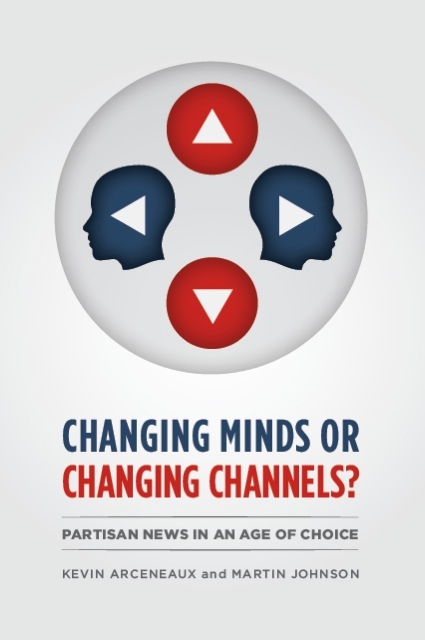Cable news is not polarizing America, says Temple political scientist in new book
At a time when ideologically-based news options on cable television are proliferating, many are concerned that such programming may be polarizing American voters.
But, according to a new book by Temple political scientist Kevin Arceneaux, partisan news shows are not polarizing America. Instead, the most troubling consequence of the ever-expanding media environment is that it has allowed people to tune out the news entirely.
"We should be less concerned about Rachel Maddow (MSNBC) or Sean Hannity (FOX) turning us into polarized voters and more concerned that Kim Kardashian (E! Entertainment Television) and Cesar Milan (National Geographic) have become even more well-known household names," said Arceneaux.
In Changing Minds or Changing Channels: Partisan News in an Age of Choice (University of Chicago Press, October 2013), Arceneaux and co-author Martin Johnson of the University of California-Riverside set out to test the claim that cable television is polarizing the mass public into opposing camps.
Much of the speculation on the impact of the news media comes from studies that were conducted at a time when viewers chose from among three major networks, said Arceneaux. "But today's television audience has a plethora of choices, and they are active participants in the media they consume."
Through a series of innovative experiments, Arceneaux and Johnson found that Americans who watch cable news are already polarized, and their exposure to partisan programming — be it oppositional or like-minded — only serves to strengthen pre-existing attitudes. In fact, the authors found that in some instances viewers become more polarized when forced to watch programming that opposes their beliefs.
In one study, Arceneaux and Johnson investigated the effects of slanted news on political attitudes under two different conditions — a forced condition or a choice condition. In one experiment, subjects were randomly assigned to either a forced condition where they were only exposed to a 15-minute segment from “The Rachel Maddow Show” or “The O'Reilly Factor”; a choice condition in which they could select to view either a segment of “Hardball with Chris Matthews” or one of two entertainment options, “The Dog Whisperer” or “Dhani Tackles the Globe”; or a control group where they were only assigned to one of the entertainment options. The self-identified ideology of the subjects was documented prior to the experiment.
The authors found that in the forced scenario people tended simply to reject or ignore programming that went against their own political viewpoints, whereas programming that conformed to viewers' political opinions caused them to adopt more extreme positions.
In other words, under a forced viewing condition, the biased broadcasts did further polarize their viewers, but only by reinforcing currently-held beliefs.
However, once the research subjects were allowed to choose what they watched, the polarizing effects dissipated. And it's worth noting, said Arceneaux, that these findings were obtained in an environment with choices that were limited compared to the numerous options available to home viewers.
"Politically-biased news shows cannot directly affect those who refuse to watch them, and in real life no one is forced to watch them," said Arceneaux. "By self-selecting out of political information, rather than choosing to watch an ideologically congenial news source, the effects of biased communication in the media are diluted."
Another possible influence of partisan news that the authors tested was whether or not fringe programming was steering the bigger political conversation and determining which issues are important.
"We found again that while partisan news indeed has the potential to undermine our common conversation or to set the political agenda, including entertainment choices substantially dilutes their power," said Arceneaux.
"We have to keep in mind that the four top-rated partisan news programs draw a mere three percent of the total number of people watching television," Arceneaux said.
In earlier days, when there were just three television networks, the nightly news set the national conversation, he said.
"Now with the explosion of entertainment options, we've created a problematic cocktail with a mix of declining knowledge, increasing voter turnout and election choices that are cast in black and white terms."
